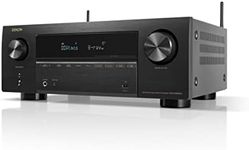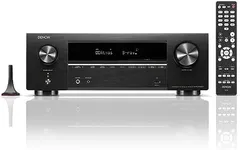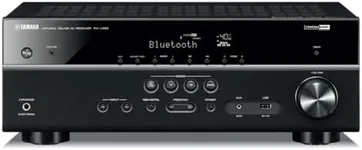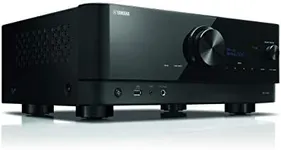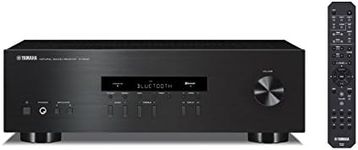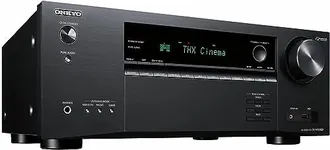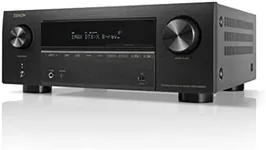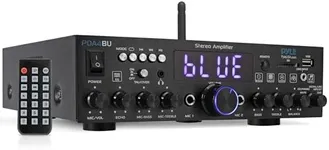Buying Guide for the Best Receiver For Turntables
Choosing the right receiver for your turntable is crucial to ensure you get the best sound quality and performance from your vinyl records. A receiver acts as the central hub for your audio system, amplifying the signal from your turntable and sending it to your speakers. When selecting a receiver, it's important to consider several key specifications to ensure it meets your needs and enhances your listening experience.Phono InputA phono input is a dedicated input on the receiver specifically designed for turntables. It includes a built-in phono preamp that amplifies the low-level signal from the turntable to a line-level signal that can be processed by the receiver. This spec is important because not all receivers have a phono input, and without it, you would need an external phono preamp. If you have a turntable with a built-in preamp, you can connect it to any line-level input, but having a phono input simplifies the setup and often provides better sound quality.
Power OutputPower output, measured in watts per channel, indicates how much power the receiver can deliver to your speakers. This spec is important because it affects the volume and clarity of the sound. Receivers with higher power output can drive larger or more demanding speakers more effectively. For small to medium-sized rooms and efficient speakers, a receiver with 50-100 watts per channel is usually sufficient. For larger rooms or less efficient speakers, you may need a receiver with 100 watts per channel or more. Consider your room size and speaker specifications when choosing the power output.
Number of ChannelsThe number of channels refers to how many speakers the receiver can support. This spec is important if you plan to expand your audio system beyond just stereo sound. A basic stereo receiver has 2 channels (left and right), which is sufficient for most turntable setups. However, if you want to create a home theater system or add more speakers for a surround sound experience, you might consider a receiver with 5.1, 7.1, or even more channels. Think about your current and future audio setup needs when deciding on the number of channels.
Connectivity OptionsConnectivity options refer to the various inputs and outputs available on the receiver, such as HDMI, optical, coaxial, and Bluetooth. This spec is important because it determines how you can connect other audio and video devices to your receiver. For a turntable, you'll need at least one analog input (phono or line-level). If you plan to connect other devices like a TV, gaming console, or streaming device, make sure the receiver has the appropriate inputs. Bluetooth and Wi-Fi connectivity can also be useful for streaming music wirelessly from your phone or computer.
Impedance MatchingImpedance matching refers to the compatibility between the receiver and your speakers' impedance, measured in ohms. This spec is important because mismatched impedance can lead to poor sound quality or even damage your equipment. Most receivers and speakers are designed to work with an impedance of 4, 6, or 8 ohms. Check the impedance rating of your speakers and ensure the receiver can handle it. Many receivers have a switch or setting to match different impedance levels, so look for this feature if you have speakers with varying impedance.
Tone Controls and EqualizationTone controls and equalization allow you to adjust the bass, midrange, and treble frequencies to tailor the sound to your preferences. This spec is important for fine-tuning the audio output to match your listening environment and personal taste. Some receivers offer basic tone controls, while others provide more advanced equalization options with multiple bands. If you enjoy tweaking the sound to get it just right, look for a receiver with comprehensive tone controls and equalization features. If you prefer a simpler setup, basic tone controls may be sufficient.

